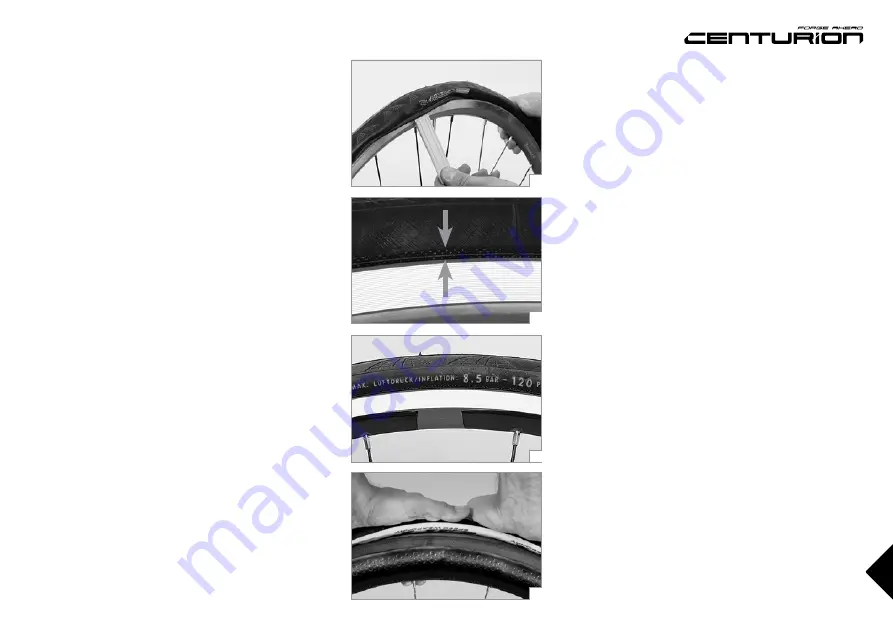
63
e
f
g
h
Inflate the tube to the desired pressure. The maxi-
mum pressure is indicated on the side of the tire.
Check whether the tire is properly seated by inspect-
ing the fine witness line
(f)
on the tire
just above
the rim edge. This line should be even to the rim all
around the tire. If it is not, deflate the tire a little and
check again. Starting from the maximum tire pres-
sure you can now reduce the pressure through the
valve to suit your needs. Please observe the recom-
mended tire pressure range
(g)
.
Tubular tires
Dismounting tires
Deflate the tire completely. To dismount the tire, start
opposite the valve by pushing the tire to the center
of the rim
(h)
until there is a gap and the tire starts to
come off. If the tire remains tight, stick a tire lever into
the gap and lift the tire off the rim.
Replacing an individual tube is impossible. Instead
you have to mount a complete tubular tire. En route
the tire cannot be glued and is consequently not tight
on the rim even when inflated.
Therefore, be sure to ride back very slowly and care-
fully by taking the shortest way possible. Back home,
you have to glue the tubular tire, as described in the
following.
Mounting tires
Careful mounting that will ensure that the tubular tire
holds permanently must be done in steps and can
take a long time. Some practice and experience with
the tire adhesive used and the relevant model of tu-
bular tire can speed up the work.
In general, mounting tubular tires is a job for your
CENTURION dealer. Read the mounting instructions
of the tire manufacturer before you start mounting.
Tubular tires can be glued either with liquid tire glue
or with adhesive tapes. The positive factor about ad-
hesive tapes is that the mounting is quick. However,
the tire will not seat properly in all cases. If you have a
puncture while out riding, the tape often remains on
the tire that has been removed and the reserve tire no
longer seats properly on the rim.
For that reason we recommend a solid bed made up
of several layers of liquid rim cement (tire adhesive).
This not only holds the tire better, but always remains
stuck on the rim when removing the tire.
Nonetheless, here, too, the reserve tire must be
pulled off once again after the ride. The existing bed
and the tire are then treated with rim cement once
again and the tire is mounted again to ensure that it
seats properly.
Содержание ROAD BIKE ISO 4210-2
Страница 95: ......
















































